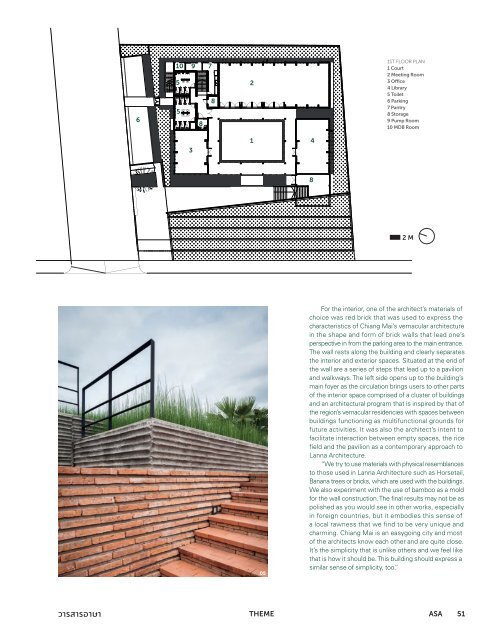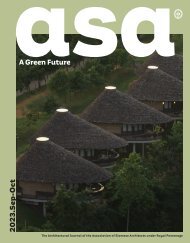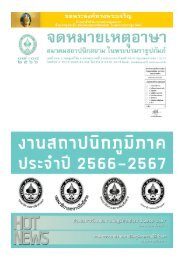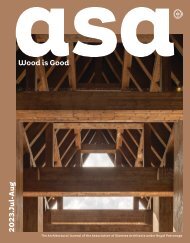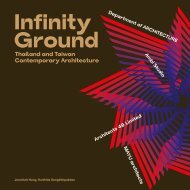ASA JOURNAL 06/59
Create successful ePaper yourself
Turn your PDF publications into a flip-book with our unique Google optimized e-Paper software.
6<br />
10 9 7<br />
5<br />
5<br />
8<br />
8<br />
2<br />
1ST FLOOR PLAN<br />
1 Court<br />
2 Meeting Room<br />
3 Office<br />
4 Library<br />
5 Toilet<br />
6 Parking<br />
7 Pantry<br />
8 Storage<br />
9 Pump Room<br />
10 MDB Room<br />
3<br />
1<br />
4<br />
8<br />
2 M<br />
05<br />
For the interior, one of the architect’s materials of<br />
choice was red brick that was used to express the<br />
characteristics of Chiang Mai’s vernacular architecture<br />
in the shape and form of brick walls that lead one’s<br />
perspective in from the parking area to the main entrance.<br />
The wall rests along the building and clearly separates<br />
the interior and exterior spaces. Situated at the end of<br />
the wall are a series of steps that lead up to a pavilion<br />
and walkways. The left side opens up to the building’s<br />
main foyer as the circulation brings users to other parts<br />
of the interior space comprised of a cluster of buildings<br />
and an architectural program that is inspired by that of<br />
the region’s vernacular residencies with spaces between<br />
buildings functioning as multifunctional grounds for<br />
future activities. It was also the architect’s intent to<br />
facilitate interaction between empty spaces, the rice<br />
field and the pavilion as a contemporary approach to<br />
Lanna Architecture.<br />
“We try to use materials with physical resemblances<br />
to those used in Lanna Architecture such as Horsetail,<br />
Banana trees or bricks, which are used with the buildings.<br />
We also experiment with the use of bamboo as a mold<br />
for the wall construction. The final results may not be as<br />
polished as you would see in other works, especially<br />
in foreign countries, but it embodies this sense of<br />
a local rawness that we find to be very unique and<br />
charming. Chiang Mai is an easygoing city and most<br />
of the architects know each other and are quite close.<br />
It’s the simplicity that is unlike others and we feel like<br />
that is how it should be. This building should express a<br />
similar sense of simplicity, too.”<br />
วารสารอาษา<br />
THEME <strong>ASA</strong> 51


